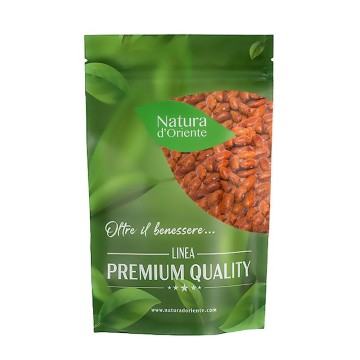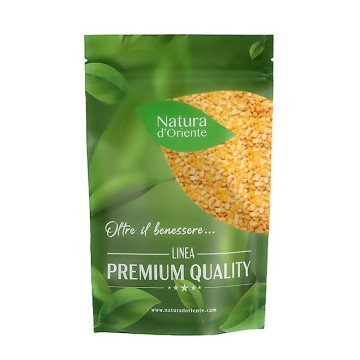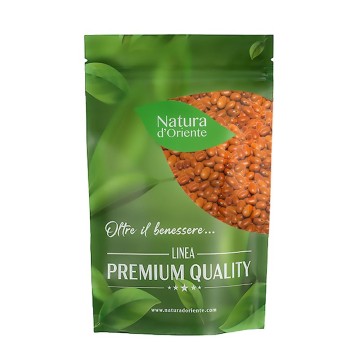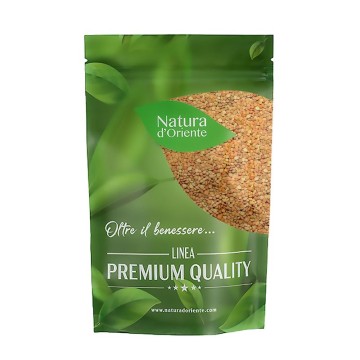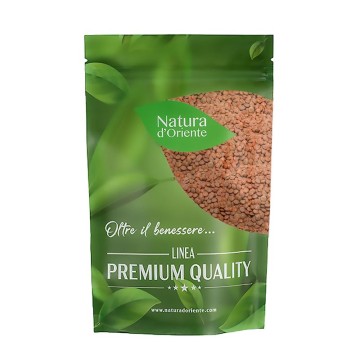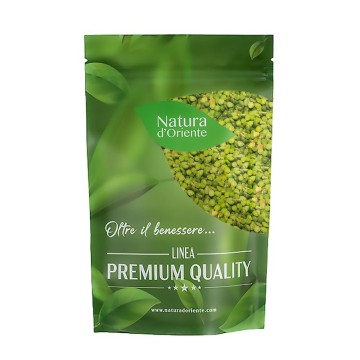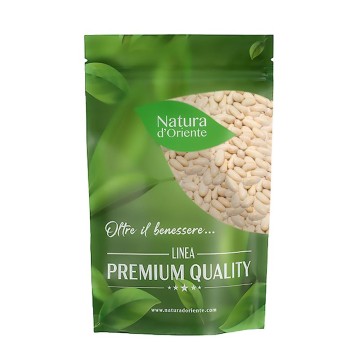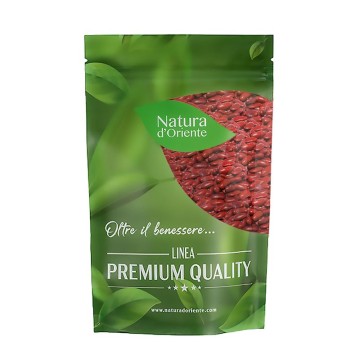These legumes have a low fat content, a high dietary fiber content and are rich in vitamins and minerals. An excellent food for our well-being, then! For this reason, black chickpeas represent a beneficial ingredient in the diet, especially for those looking for a valid supply of vegetable proteins.
Black chickpeas: properties and benefits
The dark color and shape reminiscent of corn makes these black Italian chickpeas unique. Their sweet but strong flavor is a temptation that also brings many nutritional properties. These legumes are rich in fiber, contain more iron than white chickpeas , and represent an excellent source of vitamins and minerals .
We know that including high-fiber foods in your diet can greatly contribute to well-being. Black chickpeas make both soluble and insoluble fiber available.
Soluble fiber facilitates the expulsion of bile in the digestive tract, triggering a mechanism that also helps to expel cholesterol.
Insoluble fiber prevents constipation and other digestive disorders, while filling the stomach, making us feel full for longer. An excellent incentive to avoid eating between meals, risking weight gain.
Regarding cholesterol levels, as we have mentioned, the abundant presence of soluble fiber in black chickpeas binds bile acids and prevents them from being absorbed by the body; thus reducing LDL cholesterol levels and total cholesterol triglycerides.
In addition, black chickpeas are a source of plant-based alpha-linolenic acid (ALA).
This type of omega-3 fatty acid can help increase HDL cholesterol levels, known as good cholesterol. A process that can help lower both triglycerides and blood pressure when included in a heart-healthy diet.
In terms of cardiovascular protection, black chickpeas contain a unique combination of antioxidants (anthocyanins), in addition to some phytonutrients that maintain the health of blood vessels and prevent oxidative stress of the cells in tissues.
Black chickpeas also contain significant amounts of folate, vitamin B9, which protects the well-being of the arteries, and magnesium which improves blood circulation.
In the prevention of high blood sugar levels, chickpeas have a low glycemic index, which means that the carbohydrate in them is broken down and digested slowly. The soluble fiber in black chickpeas controls the absorption and release of sugar in the blood.
Being a rich source of iron, black chickpeas can help fight anemia and increase our body's energy levels. Iron plays an important role in the formation of hemoglobin, carrying oxygen from the lungs to all cells in the body; it is an important component of systems for energy production and metabolism.
On a dietary level, it is important to remember that black chickpeas are an alternative source of protein for vegetarians and vegans. These legumes, in combination with whole grain or whole wheat proteins, provide significant amounts of vegetable protein, comparable to that of meat and dairy products. With the advantage that chickpeas are free of saturated fats.
Black chickpeas also contain vitamins of group B, C, E, K , which are beneficial for our body in metabolic activities. They also possess valuable minerals such as potassium, calcium, phosphorus, magnesium, zinc, copper, manganese and selenium.
The presence of many beneficial substances in black chickpeas can also be beneficial to obtain the right nutrients that maintain the well-being of the skin and hair.
Origins and History of cultivation
This variety of black chickpeas, part of the large Cicer arietinum family, is typical of the Mediterranean area, particularly in Puglia (Murgia Barese) and Basilicata, as well as in Umbria.
They are small and hardy plants, which adapt to many conditions, but which have been abandoned for several times after the Second World War. Today the cultivation of black chickpeas has returned, which must be harvested by hand, given the baseness of the plant.
I ceci, of every variety, have Middle Eastern origin and have been cultivated by man for millennia, it is thought about 10,000 years ago! Chickpeas were part of the culture that first developed agriculture on our planet, in the Neolithic period.
Today chickpeas are among the most cultivated legumes in the world, and represent a cornerstone of Middle Eastern, African and Indian cuisine.
Their traces date back to the time of the Egyptians and Greeks. In ancient Roman culture, we know that they are mentioned in the work On the properties of food (180 AD) by the doctor Galen. Chickpeas were very popular and were even eaten fried, and it is thought that the Latin word Cicer (chickpea) is the origin of the surname of Cicero (the Roman philosopher Marco Tullio Cicero).
Chickpeas keep very well and have a high nutritional value, even if the plants are not very resistant to diseases, compared to other legumes.
There is also a wild version of chickpeas (Cicer reticulatum) found only in parts of Turkey and Syria.
Scholars believe that the oldest variety of chickpeas, this Turkish one, is the “Desi”. Born in the central part of the Fertile Crescent (Turkey, Syria and Iran), it is a variety with dark seeds, which was later introduced in India. Here the other variety the “Kabuli” developed - with the light colored and round shape, more common today.
Cultivated chickpeas, however, can be found over 20 varieties with different colors and in various shapes.
In world crops there are generally different varieties of black chickpeas, in addition to the Mediterranean ones. Like the “Desi” Indians, with small, dark seeds and a rough outer coat; or Bengals, with a high fiber content and a low glycemic index.
Plant and Fruit
Cicer arietinum is an annual plant of legumes, belonging to the pea and bean family (Leguminosae / Fabaceae). The Cicer arietinum species is actually one of the 43 species of the genus Cicer.
Plants have a low height (grows up to 100cm high) and are found mainly in tropical, subtropical and warm temperate regions. They are widespread in the Mediterranean, the Canary Islands, western and central Asia and north-eastern tropical Africa, including Madagascar.
The stems can be simple or branched from the base, while the root reaches 1 - 2 meters deep, with secondary roots spreading mostly in the upper soil layer.
Cicer arietinum is widely grown for its tasty and nutritious seeds, chickpeas, which are harvested when immature, and can be eaten raw, roasted or boiled. Otherwise they can be harvested when ripe and turned into flour.
The flowers are up to 12 mm long, single, with white or lilac or purple petals, while the fruits are found in the small swollen and rounded pod, up to 3 cm long and 1.5 cm wide. Generally there are one or two seeds per pod.
The seeds are more or less spherical, with smooth or rough surface, up to 14 mm in diameter. They have a variable color, usually cream when dried.
Chickpea is grown up to 2,500m above sea level, and is not suitable for the humid and warm lowland tropics where it cannot flower.
Nutritional values of black chickpeas
These legumes make several beneficial nutrients available to our body. 100 grams of black chickpeas, provide calories of 305 kcal , fat (3.4%), many proteins (about 23%), few carbohydrates and abundant fiber (about 25%).
Among the mineral salts are present in black chickpeas, we find moderate levels of calcium (about 40 mg / 100 g), iron (about 6 mg), potassium (about 800 mg ), phosphorus (about 400 mg) and magnesium (about 150 mg), as well as zinc, copper and manganese.
By consuming 100 grams of black chickpeas, you assimilate: vitamin C (about 4 mg), Vitamin A (about 60 IU), good doses of folate - vitamin B9 (over 500 mcg ), Vitamin K and Vitamin E, pantothenic acid, choline and thiamine.
How to consume black chickpeas in the kitchen
Black chickpeas have a tastier and more aromatic taste than white chickpeas . They have a velvety texture, which is why they are a versa legumetile for many dishes. The variety of Mediterranean black chickpeas, in particular, is cooked for soups and stews, chickpea purée, for salads also as a side dish. Even for creams, savory or sweet, and black chickpea hummus.
Like many other legumes, the cooking times of black chickpeas require soaking, which in this case is very long, of at least 36 hours in water - usually in quantities 4- 5 times higher than the weight of legumes. No salt or bicarbonate must be added, and it is a good idea to substitute water to prevent bacteria from forming.
After soaking, the skins are soft and the chickpeas are ready for cooking, which takes about 2 hours.
Given their strong flavor, they often don't need many aromas, but for those who want to enhance their taste, it is possible to use bay leaf, rosemary, sage and small doses of cumin.
Recipe with black chickpeas: black chickpea soup from Murgia
Ingredients: black chickpeas - 150 grams already soaked - extra virgin olive oil - garlic - shallot - rosemary - chilli - salt to taste
Preparation : Put the sliced shallot in a saucepan, and let it dry with a tablespoon of oil and a light sprinkling of chilli.
Add a sprig of rosemary, a clove of garlic and the black chickpeas to the pot. Add cold water to bring everything to a boil. Turn with a wooden spoon every now and then and add water if necessary - calculate that a thick sauce should remain after cooking, so keep the right measure.
Cooking takes about an hour and a half, but after 1 hour, you can add salt. At the same time, take 3 tablespoons of black chickpeas, mash them with a fork and put them back in the pot. After 90 minutes from boiling, turn off, let it cool and serve with a drizzle of extra virgin olive oil and a few slices of toasted bread.
Black chickpeas: side effects and contraindications
Like other legumes, chickpeas are not recommended for those suffering from certain intestinal diseases, since they can cause intestinal bloating, gas and flatulence, and digestive difficulties and are not used to eating legumes .
![]()





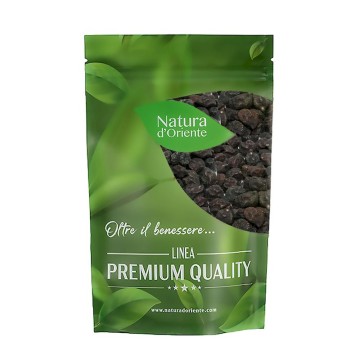



 No reward points for this product.
No reward points for this product.

